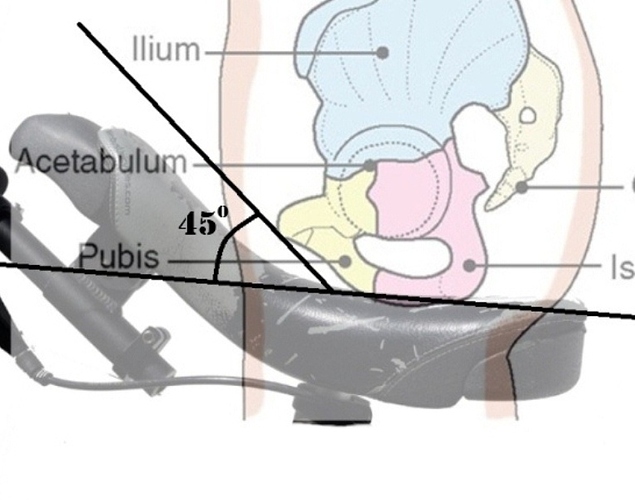You might be able to sell those too.
I was thinking the same thing shmolagin
Flatfish NNC review
Well, I took my muni out for a spin. I love the flat seat, I agree it should be shifted forward about an inch. The mount for the seat post base should be moved back an inch and the whole base could be shortened 1/2-1" as well.
I can really feel the added leverage from my handle and feel like I have more control over the uni. I’m not sure how, but it’s true 
It is interesting how different people are finding the Flatfish, some are riding it completely level and others prefer it angled back (I prefer this).
You and Ben both would like it mounted further forward, I like it where it is, so it is really a personal thing.
I wonder if we can adapt a MTB seatpost that is offset towards the rear by turning it round so the offset moves your seat forward instead?
Or, would it help by having more angle, as this would move the centre of gravity of the uni forward giving the impression the seat has moved forward?
What do you think?
Can you put up some pictures of your creation?
Cheers,
Pete.
It seems to me that shifting the seat forward and back is functionally the same as adjusting the tilt of the seat. COG will always be directly above the axle; relationship forward/back re the seat post really doesn’t matter, other than it’s relative effect on the tilt vs vertical line fom the axle to COG.
Functionally, probably, but tilting it up defeats the flatness with regards to he “meat and 2 veg”. I’ll post pics as soon as I can edit my pics, they’re too big to load right now.
You are not moving the seat forward and backward in an arc centered on the spindle, but forward relative to the centerline of the unicycle. Think of the seat like you would think of a hammer, the seat is the head, so if you were to slide the seat/head forward on the post/handle, it changes the balance.
Moving the seat forward is no different than sitting forward or backward on the seat. I find that with the flat seat I am sitting forward as much as an inch more than I did on a curved seat. Tilting the seat helps keep me back, but only because it become more uncomfortable to get forward. Since the point of a flat seat is comfort, like Tim said, too much tilt defeats the purpose.
There are off set posts, Thompson makes a nice one, but the diameter is much larger than what we use for unicycles. I guess you could cut and weld a post, but I’m not taking a saw to a Thompson!
A sliding seat mount would be a nice trick if there were a high quality unit available. I may just have to make one ![]()
My original diagrams (see below) were great in theory, but not quite what happens in reality.
I assumed that people would sit on the broadest part of the saddle, but in practice, on a curved saddle, people end up sitting on the bottom apex of the curve (the narrow bit).
So what some of you are finding on a Flatfish (that you want the saddle shifted forwards), is because you are now sitting on the broadest part of the saddle, which should be what happens on a curve saddle, but doesn’t.
So the flatfish feels like it is further ‘back’, when in fact, it is the curved saddle which has been moved backwards, as you do not sit on the broadest part of the curved saddle.
In regards to saddle tilt, I’m now of the opinion that it should be tilted downwards. The reason is that when you sit on a unicycle, you’ll find that the seatpost/frame is actually angled backwards, like this —> /
If you tilt your saddle down, the saddle will be relatively level with respect to the ground. If you tilt your saddle upward, then the equivalent would be like riding a bike with the saddle pointing up at an extreme angle.
.
Here is a diagram I think that shows what you mean.
Because the frame tilts backwards when riding, a tilted down saddle (with respect to the frame- blue line), actually levels out. A tilted up saddle (red line), squishes your squishy bits again. You don’t fall off the back because the broadest part of the saddle catches your bottom.
.
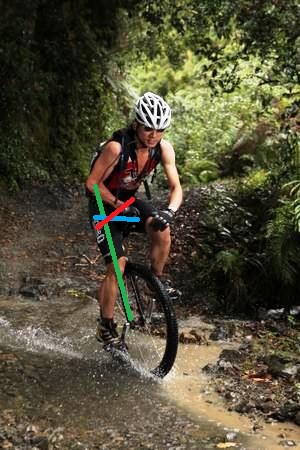
Except, unicyclists sit far more upright than a cyclist, so a downward angled set on a unicycle would be very unstable. I ride a road bike with a very slight downward angle when using down bars, but for a more upright position on a mountain bike I ride a flat seat.
I’m finding that I prefer a little bit of seat elevation in front of my pelvis, not a lot, but a bit more than I get with a completely flat saddle. My NNC with the gel pad has a little “sway back” in the center, otherwise it is quite flat. My ghetto flat seat has a little more swayback, say a 1/2" more than my NNC, and I find that it gives me more control for muni.
I swapped seats back and forth after feeling a little bit less control with a flat seat, irregardless of seat angle.
I just finished a rather exhaustive search for a setback seat post that will work with a KH mount, and the smallest diameter is 27.2 in a Thompson, so for now I am stuck with a straight post.
Might just have to visit the welding shop again; I really need to buy a welder…
In your last picture the rider appears to be leaning the frame back to compensate for riding downhill into an obstacle. I don’t ride with my frame back, at least not on a flat surface, and when I climb the frame is leaned forward.
The proof is in the pudding, I have tried riding a completely flat seat position and it rode terrible, then as I gradually tilted the seat back the feel and control improved. I continue to play with seat angle, even trying to push myself to reduce the angle over time, but I seem to be at a sweet spot after a couple weeks, 8-10 degrees depending on the seat base and foam.
Sure, it does vary with whether you are going uphill or downhill or on the flat. It was just a handy picture to illustrate the point. It wasn’t completely flat as you point out- but it was a fairly a shallow dip into the stream. When I’m climbing off the saddle, the frame comes upright, but never tilted forwards. So I would estimate that my frame angle varies between -45 and 0 degrees with respect to a vertical plane, but never +45 or greater than 0.
That’s why I’ve found having the saddle either flat or with a slight downtilt to work well for most situations.
Thomson make 27.2mm setback posts, no 25.4mm setback for nimbus uni’s though…
http://bikethomson.com/seatposts/elite-seatpost-series/
Edit nevermind I see you said that earlier…
Ok, it might be more to do with ones riding style. On a bike the saddle angle is fixed (relative to the ground).
Here is another pic of me, this time on completely flat ground. You’ll see I still tilt my frame backwards.
.
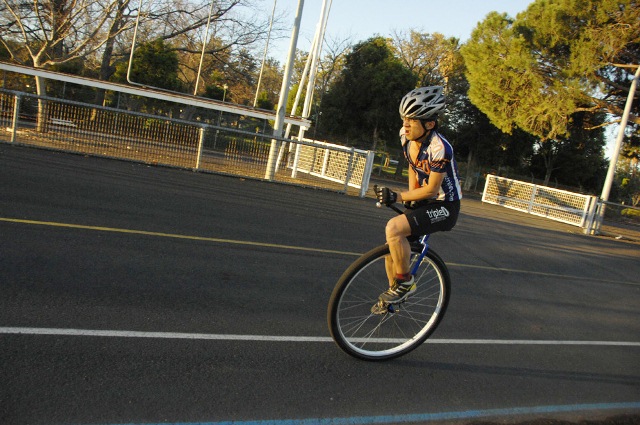
Flatfish Street/trials
I have just finished this and it is light and stiff, just waiting for Boffy to try out then I will let you know what the verdict is, I like it but don’t have much trials experience.
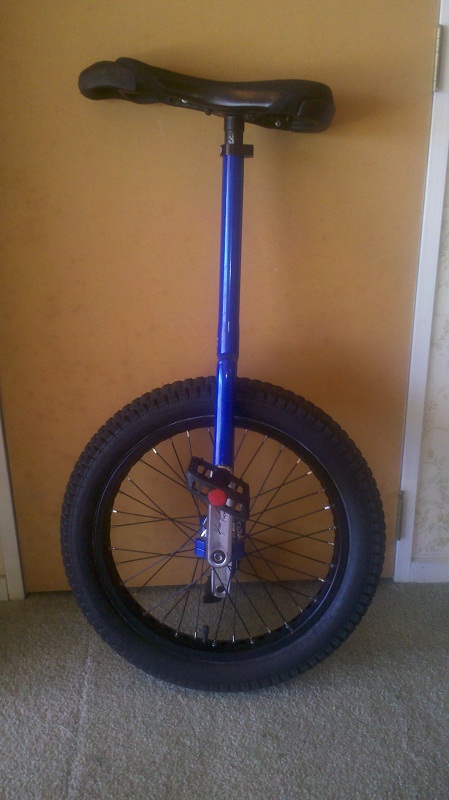
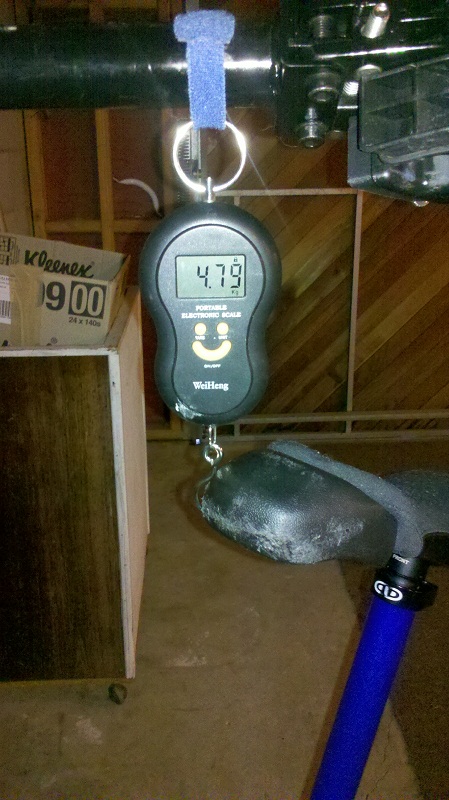
I agree with uniShark. You get exactly the same effect by tilting the saddle as by shifting the seat forwards and backwards. I’m not at all surprised that Ben prefers a saddle which is slightly tilted up, as that has the same effect as shifting the saddle forwards. Nor am I surprised than Ken prefers a slightly tilted down saddle - looking at the pictures he’s posted it is clear he likes a more rearwards saddle position.
Here are some diagrams to illustrate the point:
flat saddle
saddle moved forwards
extra bit of frame added in red
original black frame removed
unicycle rotated back so frame is upright
As you can see, if you tilt the saddle back and then rotate the frame forwards, what you get is a flat saddle shifted forwards (note that you’ll also want to increase your saddle height slightly). Who cares what angle the frame is at - a point illustrated by my second diagram of a frame type popular with cheap unicycles - what angle is the frame in that?
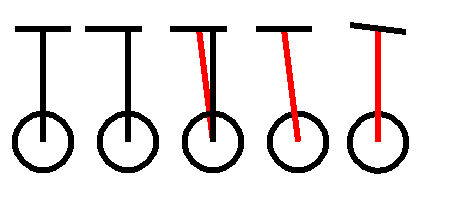
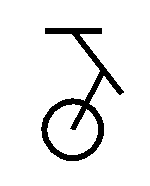
that trials seat mocks me 
[QUOTE=aracer;1571617]
I agree with uniShark.
Well put, when I tilt the seat to the best angle for me, it feels level when I ride, and no nut crush 
I agree with you agreeing with me. ![]() The diagrams do help explain what I was trying to say.
The diagrams do help explain what I was trying to say.
Thanks for the diagrams. I think I agree with you too.
Another way to look at it is that, regardless of the saddle angle, it will equillibriate to a relatively flat or (satisfactory) position to how you are riding.
What changes is the angle of the frame (which gets adjusted up/down).
On a curved saddle, the same applies, but changing the tilt might also result in one sitting on different parts of the curve.
